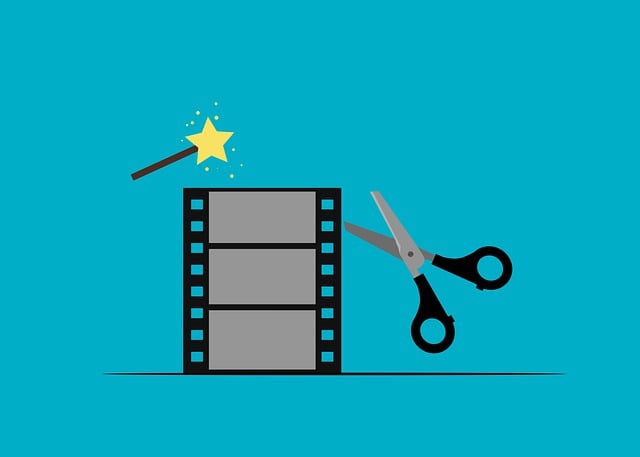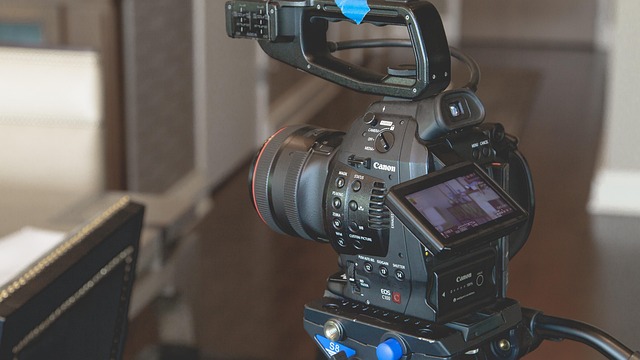DivX, a powerful video codec, enhances TV viewing experiences by efficiently compressing and decompressing video data, ensuring high-quality playback without buffer times. Its ability to reduce file sizes while maintaining picture quality makes it versatile for media players and streaming services. To play DivX on TV, check device compatibility and use external devices or encode videos with thoughtful bitrate and resolution settings. DivX's superior compression ratios and smooth playback make it a leading format, outperforming competitors like MP4 and MKV.
Discover the power of DivX—a video codec designed for efficient encoding and decoding. This article guides you through mastering DivX, starting with a deep dive into its fundamentals. Learn about the significant advantages it offers, from enhanced compression to seamless playback. We’ll show you how to set up your TV to play DivX files smoothly and share best practices for optimal video compression. Additionally, we’ll compare DivX’s performance against other popular formats, highlighting why it’s an excellent choice for your media needs.
Understanding DivX: A Video Codec Explained

DivX is a video codec, or compression algorithm, known for its efficiency in encoding and decoding video content, making it ideal for streaming and playback on various devices, including TVs. The term ‘codec’ refers to a set of technologies that enable data compression and decompression, ensuring smooth video transmission over the internet and local networks.
This codec has gained popularity due to its ability to provide high-quality video with relatively small file sizes. When you play DivX on TV, it offers an enhanced viewing experience by optimizing video streams for different screen resolutions and display capabilities. This makes it a versatile choice for media players and streaming services, allowing users to enjoy videos without compromising on picture quality or buffer times.
Advantages of Using DivX for Encoding and Decoding

DivX offers significant advantages when it comes to encoding and decoding videos, making it an excellent choice for efficient media handling. One of its key strengths is the ability to compress video files to a fraction of their original size without compromising quality, ensuring faster streaming and easier storage. This is particularly beneficial for users who want to play DivX on TV, as it allows for seamless playback on various devices, including modern smart TVs with limited storage capacity.
Additionally, DivX supports a wide range of video formats and codecs, making it versatile for different media types. Its efficient encoding process reduces file sizes without sacrificing visual fidelity, which is crucial for maintaining high-quality video experiences. This feature is especially useful for online content creators and streamers who need to optimize their videos for various platforms while ensuring viewers enjoy a smooth and immersive experience.
Setting Up Your TV for Playing DivX Files

To start playing DivX files on your TV, the first step is ensuring your television supports media playback from external devices. Check if your TV has built-in support for playing back common video formats like DivX. Many modern smart TVs come with pre-installed applications that can handle a variety of codecs, including DivX.
If your TV lacks native DivX support, don’t worry! You can still play DivX videos by connecting your TV to a compatible device, such as a gaming console or a streaming stick. These devices often have built-in video decoders capable of processing and playing DivX files smoothly. Simply connect the device to your TV using an HDMI cable, select the appropriate input, and you’re ready to enjoy your DivX videos on the big screen.
Best Practices for Efficient Video Compression with DivX

When encoding videos for efficient compression using DivX, best practices involve balancing quality and file size. Start by selecting the right codec; DivX offers advanced compression techniques that preserve video quality while significantly reducing file sizes, ideal for streaming or playing DivX on TV.
Adjust encoding settings thoughtfully. Bitrate is a key factor; higher bitrates maintain more detail but increase file size. Choose a bitrate suitable for your content and intended viewing experience. Additionally, consider resolution; downscaling to lower resolutions can dramatically reduce file size without noticeable quality loss, benefiting both storage space and streaming efficiency.
Comparing DivX Performance with Other Popular Formats

DivX has long been recognized for its superior video encoding capabilities, making it a top choice for efficiently compressing and decoding high-quality videos. When compared to other popular formats like MP4 and MKV, DivX consistently outperforms in terms of compression ratios and playback smoothness, especially when streaming or playing DivX on TV.
The advanced compression algorithms used by DivX allow for smaller file sizes without sacrificing video quality, which is particularly beneficial for limited storage spaces and faster data transfers. Additionally, DivX’s robust decoding technology ensures a seamless viewing experience, delivering crisp visuals and minimal lag, even with complex video content. This makes it an excellent choice for media enthusiasts seeking optimal video playback performance, especially when optimizing for TV screens.
DivX has proven itself as an efficient and powerful video codec, offering significant advantages in encoding and decoding. By understanding its unique capabilities and implementing best practices, users can ensure seamless playback of DivX videos on their TVs. With its robust performance compared to other formats, DivX remains a top choice for those seeking optimal video quality and size without compromising. So, why wait? Dive into the world of DivX and experience smooth, high-quality video playback right at home.
